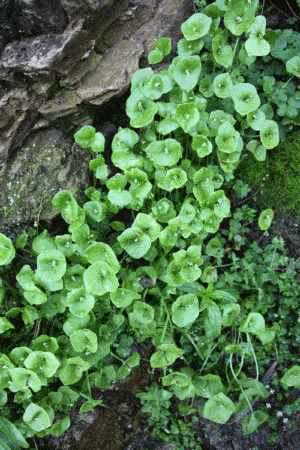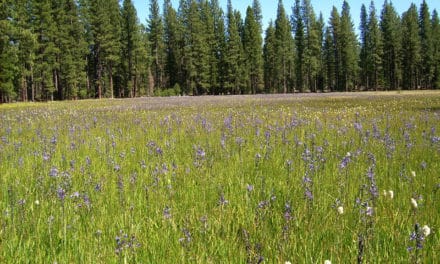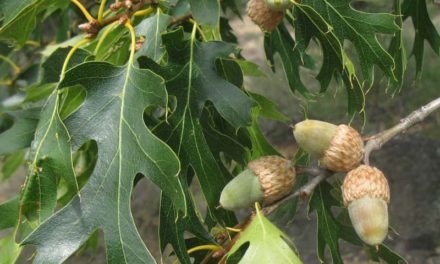 By Jim Moore, Entomologist
By Jim Moore, Entomologist
Of the native edible wild greens found in North America, very few if any, have made their way into the gardens of folks throughout the world more than what we here in California call Miner’s Lettuce, species Claytonia perfoliata. Just as we also have several wild growing healthy greens from the Old World, such as dandelion, lamb’s quarters, and purslane; so now our own Miner’s lettuce can also be found growing wild ‘over there’ in suitable fields and woodlands.
Miner’s Lettuce grows natively from Alaska south to Central America, and eastward as far as Montana. But nowhere is it more abundant than within Northern California throughout our foothills and valleys. In many places fields and hillsides are just carpeted with Miner’s lettuce.
Miner’s Lettuce is a member of a group of plants commonly known as Spring-beauties, genus Claytonia. In other locations, outside of California, it is called: Spring beauty, Indian lettuce, and Winter purslane. Within our Nor Cal region, other common edible Claytonia cousins of Miner’s lettuce include: Stream-bank spring-beauty, Western spring-beauty, and Red-stemmed spring-beauty; none of which have achieved the popularity and fame as Miner’s lettuce.
When the First Peoples to enter Western North America began to migrate southward, these and other Claytonia cousins helped to provide the tribes with the essential nutrients primarily found in greens; and the abundance they found here in Northern California was truly a blessing from the Creator.
There was something else here in Northern California that was exceptionally abundant – Gold! When the valuable metal was discovered in 1848, the greatest rush of gold-seekers in history descended upon Northern California. Thousands upon thousands of hopeful prospectors spread out across the foothill and mountain lands seeking their fortunes. The nonperishable foods that they hauled in provided insufficient long term nutrition; and the disease known as scurvy, caused by an extreme deficiency in vitamin C, began to affect the health of many prospectors. The people of the local tribes, however, were as healthy as could be; and this was noticed by the prospectors. Eventually the gold seekers learned from the tribal peoples of a common plant that cured them of scurvy. At first this plant was called Indian lettuce; but as more and more prospectors began eating this healthy wild green, and as news of this plant’s healing benefits spread far and wide, the name Miner’s lettuce became more commonly used.

As the decades passed many cities and towns, orchards and farms, and roads increased and grew upon the land; and through it all Claytonia perfoliata has persevered and survived abundantly, both in rural and urban locations.
The species name perfoliata refers to the characteristic leaf that completely surrounds the more erect stem that bears the small white flowers. The lower leaf bearing stems radiate outward, rosette like, from the base. Miner’s lettuce is an annual plant that reseeds itself each year, and sprouts anew in late winter or early spring depending on elevation. The best tasting plants grow larger in moist shady areas, such as under the shade of woodland trees; whereas in full sunshine they grow much smaller and may be more bitter tasting.
Harvesting miner’s lettuce is best done when the flowers are just beginning to bloom, but before the seed begins to set. Remember to always leave enough flower bearing stems in each location so they can reseed themselves. Usually miner’s lettuce is eaten as an additional salad fixing, and occasionally it is cooked like spinach. A great project with young children would be to harvest, or purchase, seeds to plant in your own gardens.











